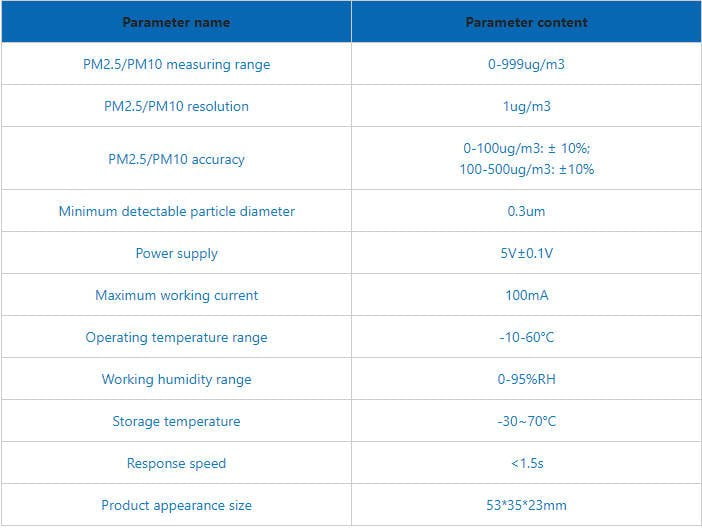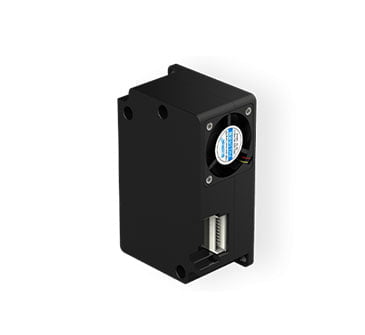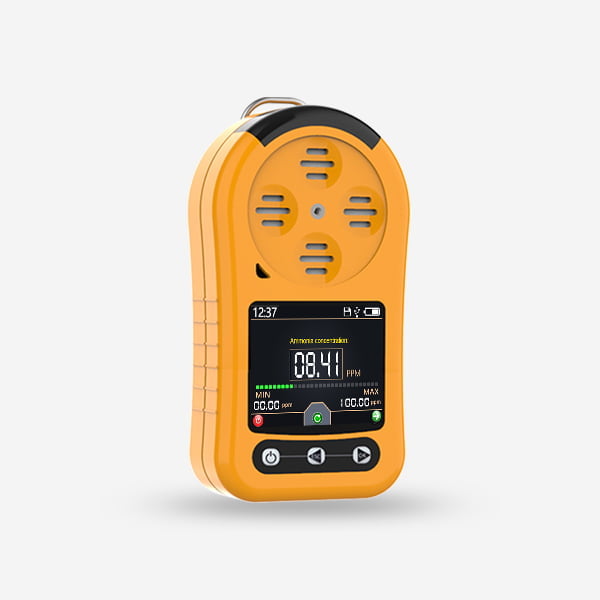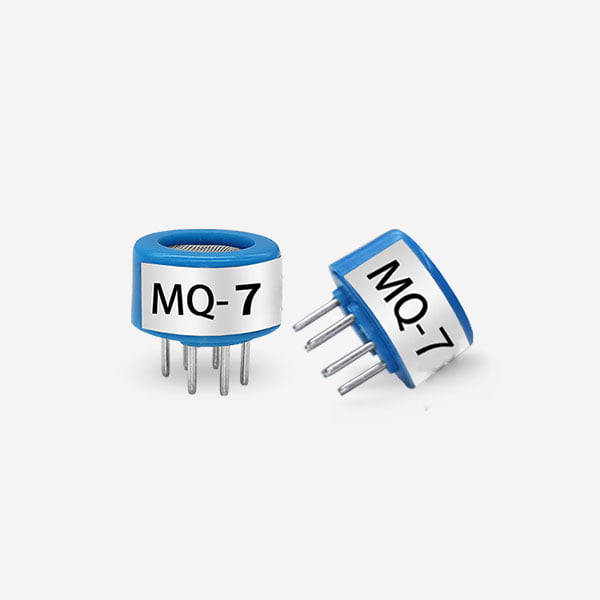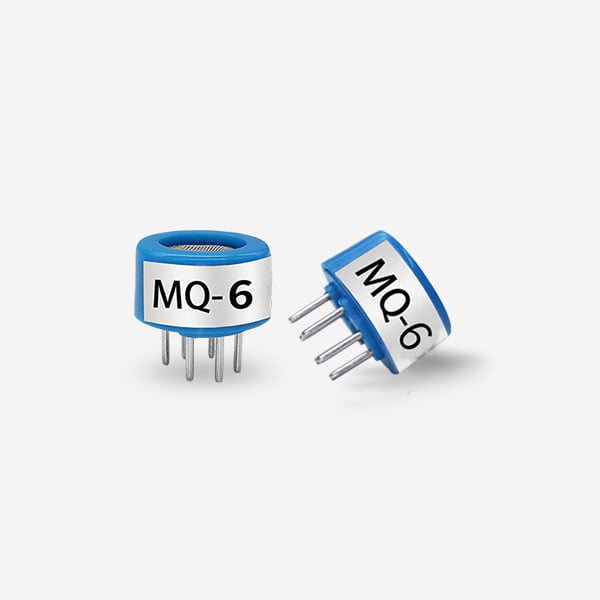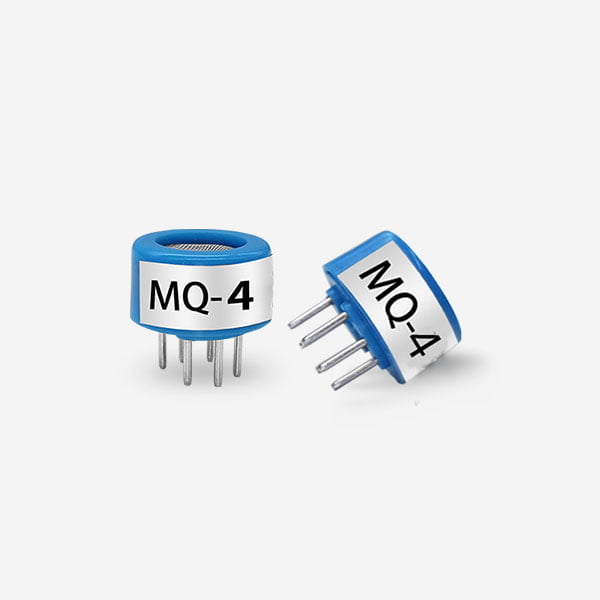The particulate matter sensor module, also known as a dust sensor, is a crucial component in monitoring air quality. It specifically measures the concentration of particulate matter (PM) in the air, including PM2.5 and PM10 particles.

Description:
The PM2.5 refers to fine particles with a diameter of 2.5 micrometers or smaller, while PM10 refers to particles with a diameter of 10 micrometers or smaller. These particles can come from various sources such as smoke, dust, vehicle emissions, industrial activities, and pollen.
The sensor module utilizes advanced technology to detect and quantify the number of particles present in the air. It typically consists of a laser light source, a detection chamber, and a microcontroller unit for data processing. The laser light source illuminates the air sample, and the scattered light is measured by the detection chamber. The microcontroller unit then calculates the particle concentration based on the intensity of the scattered light.
The readings provided by the particulate matter sensor module are essential for assessing air quality and determining potential health risks. High levels of PM2.5 and PM10 particles have been associated with respiratory issues, cardiovascular problems, and other adverse health effects. By continuously monitoring the particulate matter levels, authorities and individuals can take necessary actions to minimize exposure and protect public health.
The sensor module can be integrated into various devices and systems, including indoor air quality monitors, environmental monitoring stations, and wearable devices. It provides real-time data on particle concentrations, allowing for timely responses and informed decision-making.
In summary, the particulate matter sensor module plays a crucial role in monitoring and measuring PM2.5 and PM10 particles in the air. Its accurate and reliable measurements provide valuable information for assessing air quality, understanding health risks, and implementing appropriate mitigation strategies.
Features:
High Sensitivity: PM sensor modules are highly sensitive and capable of detecting fine particulate matter with a diameter as small as 0.3 microns. This high sensitivity allows for the accurate measurement of PM levels in the air.
Real-time Monitoring: PM sensor modules provide real-time monitoring capabilities with fast response times, allowing for continuous measurement and immediate response to changes in PM concentrations.
Compact and Lightweight: PM sensor modules are compact and lightweight, making them easy to integrate into various devices or systems. Their small size and low power consumption make them ideal for use in portable or handheld applications.
Low Maintenance: PM sensor modules require minimal maintenance, with no moving parts or consumables. This low-maintenance design reduces operational costs and downtime.
Long Service Life: PM sensor modules have a long service life, typically several years, with stable performance over time. This longevity ensures reliable and accurate measurement of PM levels over extended periods.
Easy Integration: PM sensor modules are easy to integrate into different systems or devices, with simple interfaces and communication protocols. This ease of integration enables seamless integration into existing air quality monitoring systems or other devices.
Accurate and Reliable: PM sensor modules provide accurate and reliable measurements of PM levels in the air, helping to ensure compliance with environmental regulations and protect public health.
Data Logging and Analysis: Many PM sensor modules have data logging capabilities, enabling the storage and analysis of measurement data over time. This data can be used to identify trends, assess exposure levels, and evaluate compliance with safety regulations.
In summary, PM sensor modules offer high sensitivity, real-time monitoring, compact size, low maintenance, long service life, easy integration, accuracy, and reliability. These characteristics make them valuable tools for measuring and monitoring PM levels in various applications, contributing to environmental protection and public health.

Detail:

Technical Parameters:
